Scotland is certainly popular with international visitors, owing in part to the wild, natural beauty of the Highlands. In particular, the Isle of Skye boasts some of Scotland’s most rugged and spectacular scenery – making it a favorite Scottish destination for visitors & locals alike.
The Isle of Skye is the largest of the Inner Hebrides islands (over 600 square miles), and you’re never more than five miles from the sea! The island has only around 13,000 residents. And a quarter of those live in Portree – Skye’s main village & charming tourist hub. Plus, the Skye Bridge conveniently connects the island to the Scottish mainland (no ferries needed!).
Skye’s dramatic coastline winds its way around its many peninsulas and sea lochs (inlets), with beautiful, craggy mountains filling much of the interior. The island’s picturesque rolling hills & fields are mainly populated by sheep and small villages. There are even medieval castles to visit – most in ruins, one beautifully preserved (Dunvegan).
My Visit to Skye / Purpose of the Blog Post
I visited the Isle of Skye for 3 nights / 2 ½ days with good friends Carol & Eddie in late September 2024. We stayed in Portree. We had our own car on the island, since we were exploring all around Scotland by car, using the Rick Steves’ “Best of Scotland” guidebook. We loved Skye and everything we saw & did!
In this blog post, I will share highlights of Portree plus take you on an exploration drive around the magnificent Trotternish Peninsula – considered the Isle of Skye’s crown jewel for visitors. In a future blog post, I’ll cover other key sights on Skye.
Portree – Skye’s Charming Main Village
Indeed, Portree is a perfect base for exploring the Isle of Skye – touring different parts of the island by day and returning home afterwards to relax in this cute, low-key seaside town. Portree boasts an adorably picturesque harbor, fronted by pastel-colored homes.
Because of nearby surrounding peninsulas, Portree’s harbor has been protected from fierce west coast storms. This has allowed Portree to become Skye’s leading town over the years. Much of the village dates from an early 19th century boom time when it was a kelp gathering and a herring-fishing center.
With a population of around 3,000 residents, Portree sits on a hill just above the harbor. The town offers hotels, B&Bs, good restaurants & cafes, cute shops and the necessary tourist services in the small business zone.
Short Scenic Walk to “The Lump”
A heavily wooded bluff – affectionately known as “The Lump” – sits above the harbor’s south end. A walk to “Ascend the Lump” sounded interesting in Rick Steves’ guidebook, so my friend Carol & I said “Let’s go!” Not far from the harbor & town center, we made a left turn at the Portree Medical Center and walked on an uphill lane through the trees.
At the top of the hill (a rocky outcrop sitting between two harbors), we reached a large, flat bowl (below left). Apparently, this area was blasted out of solid rock so that it can hold 5,000 people during Skye’s annual Highland Gathering. The Scots all over the country LOVE their annual Highland Games!
We visited the nearby Apothecary Tower, a round crenellated stone tower, built in 1834. We were surprised to learn the tower was not meant as a fortification. Instead, it alerted approaching sailors that a pharmacist was available in Portree. Interesting… I guess flashing neon green cross signs hadn’t been invented yet!
Happily, the tower was open, so we climbed the inside circular metal steps to the top. There we enjoyed some nice views of the harbor and the surrounding countryside. By this time, it was almost 7pm but it was clear enough to see the “Old Man of Storr” (a tall jagged peak) on a hill in the distance (below left).
Dining on Local Fish-and-Chips
Portree has two fish-and-chips shops (chippys). So, we decided that for dinner our second night, we would partake of this most “traditional” British dish (with Scotland being part of the UK).
We chose The Harbour Fish & Chips Shop, located on the harbor front & established in 1995. We had passed the shop the day before, noticing long lines of customers in front, waiting for their takeout. Rick Steves had also written that the shop had “good fish that’s cheap and in big portions.” SOLD!
It turned out to be a fun & tasty local experience! Carol & I walked down to the harbor and checked out the shop’s menu posted on the wall. After a short wait, we placed our order with a friendly, blue-shirted man for 3 fish-and-chips (battered haddock & fries) and one order of onion rings.
This man also assembled the freshly fried fish and chips, sprinkled them with lots of salt and vinegar, packaged them up in butcher paper, and took our money (cash only!). His colleague in a white shirt – whom he called “the chef” – was busy doing the battering and frying of the food. Good teamwork!
Outside, at the bottom of the menu, there were photos (above) proudly displayed of Prince Charles & Camila on a 2021 visit to the shop. I guess their fish-and-chips really are fit for a King! We took our fish-and-chips back to our Airbnb where Eddie was waiting. A short time later, with full bellies, we all agreed that our local chippys meal was delicious – and, of course, low calorie & low cholesterol!
Trotternish Peninsula Loop Drive
We read that Skye is known for unpredictable weather. So, on our first full day in Skye, we were excited to awaken to decent weather. That meant that our hoped-for Trotternish Peninsula Loop Drive today was a go!
And our luck held during our next 8 hours of touring. We had cloudy skies all day but only a few short episodes of mild sprinkles. Not bad for Scotland & Skye!
About the Magnificent Trotternish Peninsula, Rick Steves says it well: “This inviting peninsula north of Portree is packed with windswept castaway views, unique geological formations, and some of Scotland’s most dramatic scenery. In good weather, a spin around Trotternish is the best activity Skye offers.”
Rick recommends circling the peninsula counterclockwise from Portree, which is what we did. He also advised that his self-guided driving tour (see map, below right) takes about two hours with minimal stops, but it deserves much more time. On this, I heartily agree – as I had mentioned, we spent a full 8 hours!
Let’s Go Explore the Trotternish Peninsula
The following section highlights the sights we saw (in order) on our Trotternish Peninsula Loop Drive. This should give you a very good idea of the variety of beautiful, rugged scenery in this part of Skye. And yes, these sights are all ones I would recommend for your visit.
The Peninsula Loop Drive is done on peaceful two-lane country roads that circle the peninsula. There are quite a few parts where the road narrows to just one-lane for cars traveling in both directions.
So, our trusty driver Eddie got good practice in the Skye’s perfected technique & etiquette of using the frequent “passing lanes.” Happily, we found that all the drivers were courteous, and it worked well.
Old Man of Storr
This tapered 160-foot-tall pinnacle of weathered basalt rock stands upright & apart from the other rock formations of the Storr mountain range. This “Old Man” is one of the classic images of Skye (below right). There is a pay parking lot and a trailhead directly below the formation because it’s a popular hiking spot.
Apparently, it can be an “ambitious hike” up to the actual formation – with a recommendation to allow 2 hours for the roundtrip. We just did a “drive by” of the “Old Man” with photos snapped from the car. We saved ourselves for a hike at The Quiraing, which Rick Steves said offered better hiking!
Lealt Gorge
This pretty stop was located just along the main road. As the River Lealt tumbles downward on its way out to the nearby sea, it has carved a scenic gorge amidst the dense foliage. We walked out onto a long wooden viewing platform to enjoy close-up views of the gorge and some of its waterfalls.
We parked in the upper lot, which also gave us views of the rocky coastline where the Lealt River meets the sea far below. There were some plaques (with photos) which detailed interesting history of the area.
In the 1950s, there were eight salmon fishing stations on the east coast of Skye. We learned that the ruins we could see below on the shore (below right) were from a salmon “bothy” (fishermen’s accommodations) from those early days.
Kilt Rock
Traveling in Scotland, there was bound to be a rock formation somewhere that reminded locals of their beloved kilts. Welcome to Kilt Rock! I will admit that I could somewhat make out the kilt resemblance on these 200-foot-tall sea cliffs.
I’m no geologist, so I’ll let Rick Steves better describe it: The cliff “has a layer of volcanic rock with vertical lava columns that look like pleats (known as columnar jointing), sitting atop a layer of horizontal sedimentary rock.” Do you feel smarter now? You’re welcome!
What I can say is that the views in both directions of the dramatic sea cliffs were equally beautiful – and one was even accompanied by a tall waterfall crashing down to the sea!
The Quiraing
The Quiraing is the jagged northern end of the Trotternish Ridge. It has been formed by a massive landslip which created its high cliffs, hidden plateaus and rock pinnacles with names like “The Needle or “The Prison.” The sheer beauty of this landscape will dazzle you – as it did us!
Reaching The Quiraing’s parking lot & trailhead is part of the adventure! Near the village of Staffin, you turn off the main road onto a single-track road that ultimately cuts across the peninsula to the town of Uig on the other side. Luckily, it’s only 2.5 miles (around a 10-minute drive) to the parking lot.
At the large parking area (which apparently can get very busy in high season!), you’ll see a sign (above) that has two short walks where you can enjoy lovely views of the peaks and back down the valley to the ocean. With these walks, you don’t need to be a hiker to view this amazing scenery.
Rick Steves counsels: Several exciting hikes from here offer a closer look at the formations. If you’ve got the time, energy and weather for a rewarding hike, here’s your chance! You can follow the trail toward the bluff, and at the fork, decide to stay level (to the base of the formations) or veer off to the left and switch back up (to the top of the plateau).
Carol, Eddie & I took a short hike on the “level trail” around the base of the grassy mountain hillside, dotted with lounging sheep. We walked for about 15 minutes on the trail but turned around when the next part got steeper and a bit slippery. My friend Jack Daulton hiked the trail a couple days later. He went quite a bit further and got some of these beautiful photos!
Please, don’t miss the chance to visit The Quiraing. Hopefully, you’ll also have decent weather (ie, a clear day) to enjoy the spectacular views. Lastly, to sound smart, here’s a tip: locals pronounce Quiraing as “kerr ANG”.
The Columba 1400 Centre
After all that Quiraing beauty and light hiking, we were hungry and ready for lunch. Luckily, we found a great place right in Staffin – The Columba 1400 café – thanks to another Rick Steves’ recommendation.
The café is open for lunch from 12-4pm. After a short wait for a table, Carol ordered their special red pepper soup while Eddie & I had the traditional Cullen skink (fish chowder with smoked haddock and potatoes) along with homemade bread. Everything was delicious!
What made the experience even more special was learning about Columba 1400 Center. It’s a Christian-run retreat center for struggling teens from the big cities. Per their website: “They help young people and the adults around them to be the change they want to see in the world.” The café and a nice gift shop help support their work. What’s not to love?
Duntulm Castle Ruins
Leaving Columba 1400, we continued our drive north to near the tip of the peninsula and across to the other side of the coast. There, we made a short stop to visit the ruins of Duntulm Castle – about a 5-minute walk from the roadside parking area.
The castle was built in the 14th & 15th centuries, when the area was subject to feuds and many fierce battles between the rival clans of MacLeod and MacDonald. By the early 17th century, the MacDonalds had finally gained the upper hand in the area. And around 1730, the castle was abandoned.
The castle ruins, themselves, are small and unimpressive. However, the setting & surrounding scenery is the reward. In the misty distance, we could see the islands of the Outer Hebrides (above, right). Rick Steves describes them as “the most rugged, remote and Gaelic part of Scotland.” (BTW, this was the closest we got to the Outer Hebrides on our travels!)
On our short walk to the ruins, we passed green rolling fields, more lounging sheep, a rocky beach, and some white stucco & grey-tiled homes of the village of Duntulm. The scene was idyllic & all so Isle of Skye-ish!
Skye Museum of Island Life
It was another short drive to our next stop – The Skye Museum of Island Life, another of Rick Steves’ strong recommendations. This small family-run museum, which opened in 1965, explains what life was like for a typical Skye family at the end of the 19th century (so well over 100 years ago).
There are 7 thatched stone huts in total. Three of the huts are original, more than 200 years old. Each tells a different part of the island story. The Old Byre (Barn) displays farm implements. One hut is the village blacksmith, and another has an exhibit on weaving.
The Old Ceilidh House (below right) was a gathering place for the entire community in those early days. This hut contains informative displays about crofting, which was the traditional tenant-farmer lifestyle on Skye.
Particularly interesting is The Old Croft House, the actual residence of the Graham family until 1957 (above left). Inside there are three fully furnished rooms: a kitchen (with a peat burning fire), the parents “master bedroom,” and a bedroom for the 10 kids.
The Skye Museum is definitely worth a visit! As we toured, it continued to affirm the hearty nature of the Scottish people who lived such a simple, hard-working life in some very rugged conditions. For more info, you can visit the Skye Museum website.
The Fairy Glen
I was intrigued by the guidebook’s description of The Fairy Glen, so we made sure to visit. Driving south on the Peninsula, we passed the town of Uig (below right) and its large harbor – which is a departure point for ferries out to the islands of the Outer Hebrides. Soon after, we were on the lookout for the turnoff that would lead us to the Fairy Glen.
After a sharp left, we found ourselves on a narrow, winding wooded country lane. To Eddie’s non-delight, it was another Skye one-lane road. With relief, we safely arrived 1.5 miles later at the parking lot (filled with cars!). And there was the usual Scottish “Pay & Display” machine to welcome us.
Now the reward! On easy-to-walk paths, we entered a truly magical, other-worldly place. The Fairy Glen is a small valley with undulating terrain and grassy conical hills called “fairy towers.” Whether you believe in fairies or not, it’s not hard to imagine why locals claim that they live here.
We arrived at the Fairy Glen late in the day, around 5pm, and it was starting to lightly sprinkle. So, we took just a short walk through the fairy towers which was pretty cool! We spotted the tallest rock tower, called the “Fairy Castle,” and walked closer but we didn’t take the path all the way to the top.
Returning to our car, we continued our drive south for about 30 minutes to return to Portree. Arriving home, we were delighted that our day’s exploration had turned out so well!
Hope you have enjoyed our Tour around the Trotternish Peninsula – and gotten a good sense of the wild & varied beauty of Skye’s landscape.
Part 2 – Isle of Skye (to be continued)
I’m not done with Skye yet as there’s much more to share! The next blog post will cover other highlights of the Isle of Skye – including Dunvegan Castle & Gardens, Neist Point Lighthouse, Eilean Donan Castle & more. Stay tuned…
ISLE OF SKYE TRAVEL ADVICE – BOOK AHEAD
Important Advice from Rick Steves: As the most popular town on Scotland’s most popular island, Portree is absolutely jammed with visitors in the summer. There are lots of hotels and B&Bs, and an abundance of good restaurants – all of which book up well in advance. To avoid disappointment, have your room booked months ahead and restaurants weeks ahead.
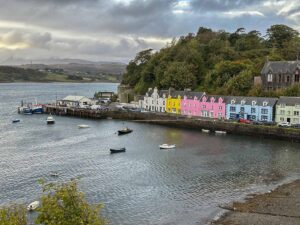
Adding My Personal Experience: I echo what Rick says above. If you will be visiting the Isle of Skye, you must plan ahead. My 3-night visit to Skye was at the end of September (22-24th) and we still had some real challenges. After a lot of searching of different options, my friend Carol was finally able to book our Portree lodging (a nice Airbnb) at 3 months out.
As for our three dinners in Portree, that was also a challenge. Carol tried unsuccessfully to book some Portree restaurants ahead, so we ended up waiting until we arrived. Turns out, on our first evening in Portree (a Sunday) when we were walking around looking for a place to eat, some restaurants were closed (on Sunday) and others were already “fully booked” for the evening. So, we ended up at the local Coop (grocery store) to purchase frozen pizza to take home. Luckily, we had a kitchen.

My example is not meant to scare you but to serve as a caution. Yes, visiting the wonderful Isle of Skye takes more advance planning as an independent traveler than other parts of Scotland.
In addition, I would say from this experience going in late September, I would definitely avoid Skye in the summer peak season (July & August). I can’t imagine the crowds!
HOW TO GET TO THE ISLE OF SKYE
Let me share what we did, as independent travelers with a car touring all around Scotland – and this worked great for us!
Arriving Skye: We were coming to Skye from the southern part of the mainland after spending the night in Oban. That next day, we drove north through the beautiful Glencoe Valley to the ferry port town of Mallaig on the mainland.
We took a CalMac car ferry from Mallaig to the Isle of Skye’s port of Armadale (Ardvasar). The ferry ride (3:45-4:15pm) was just 30 minutes long. I prebooked the ferry ahead on the CalMac website as there are limited spaces for cars. Also know that the schedule will vary, depending on the day and the tides.
From Armadale, it was just a one-hour drive north to Portree. Voila – the drive & ferry ride were both easy, along with being scenic!
Departing Skye: On our way off the island, we took the easy & convenient Skye Bridge back to the Scottish mainland. The bridge connects Skye’s village of Kyleakin with the mainland town of Kyle of Lochalsh. The bridge first opened in 1995 with tolls, but it’s been free to cross since 2004.
- Recommended Guidebook: Rick Steves’ excellent “Best of Scotland.” Click here for the Amazon link.
- Isle of Skye Website
COMMENTS: Have you visited Scotland & the Isle of Skye? What did you think? Did you do the Trotternish Peninsula Drive? What were your favorite parts of Skye? How were the crowds?



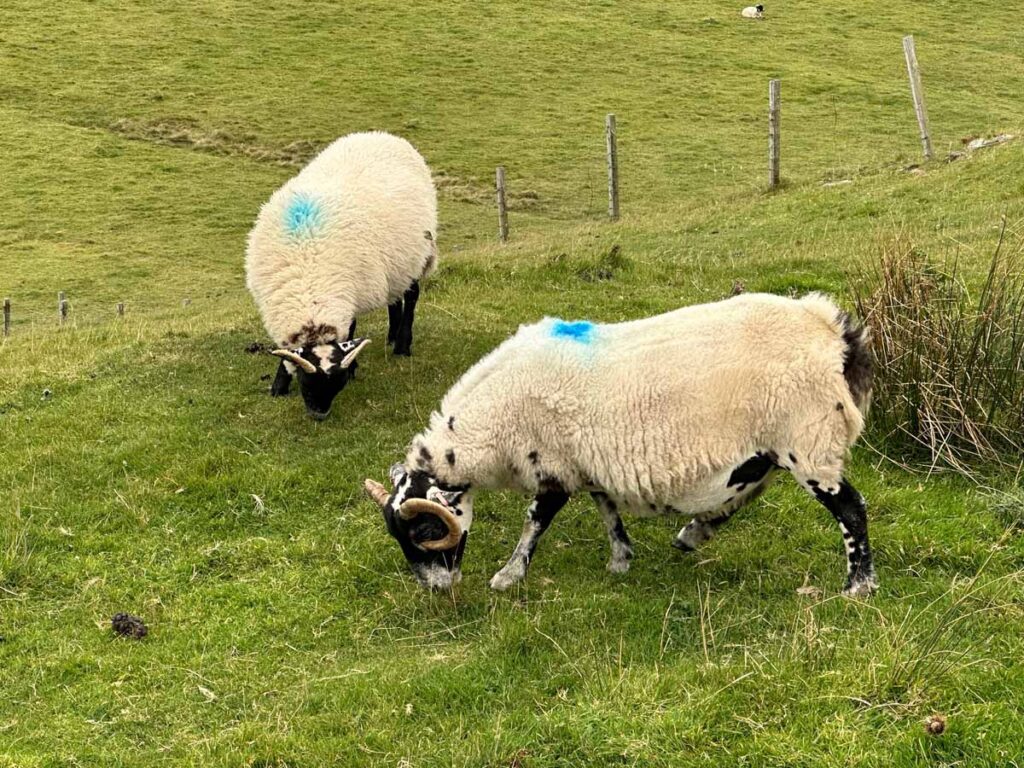


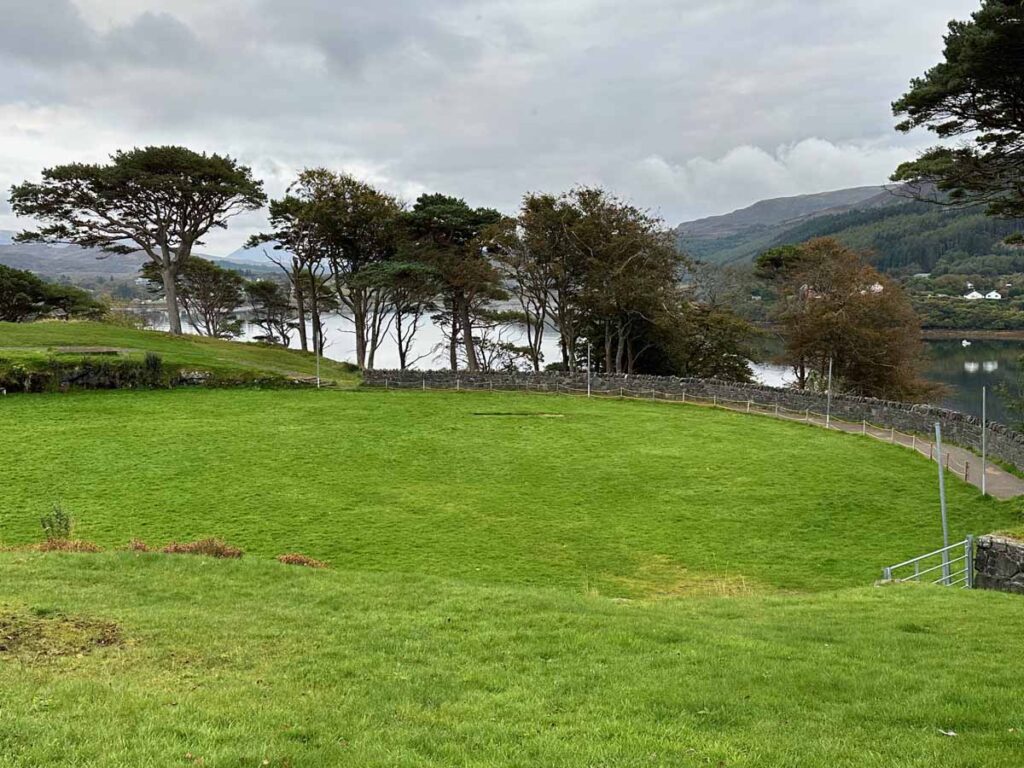


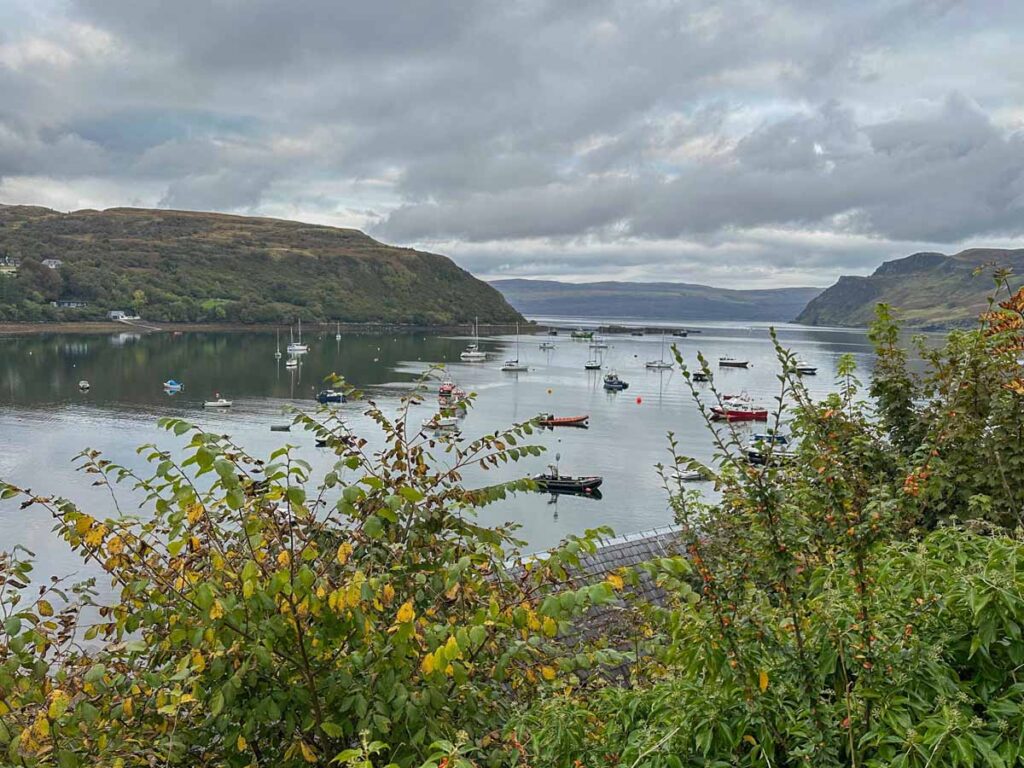

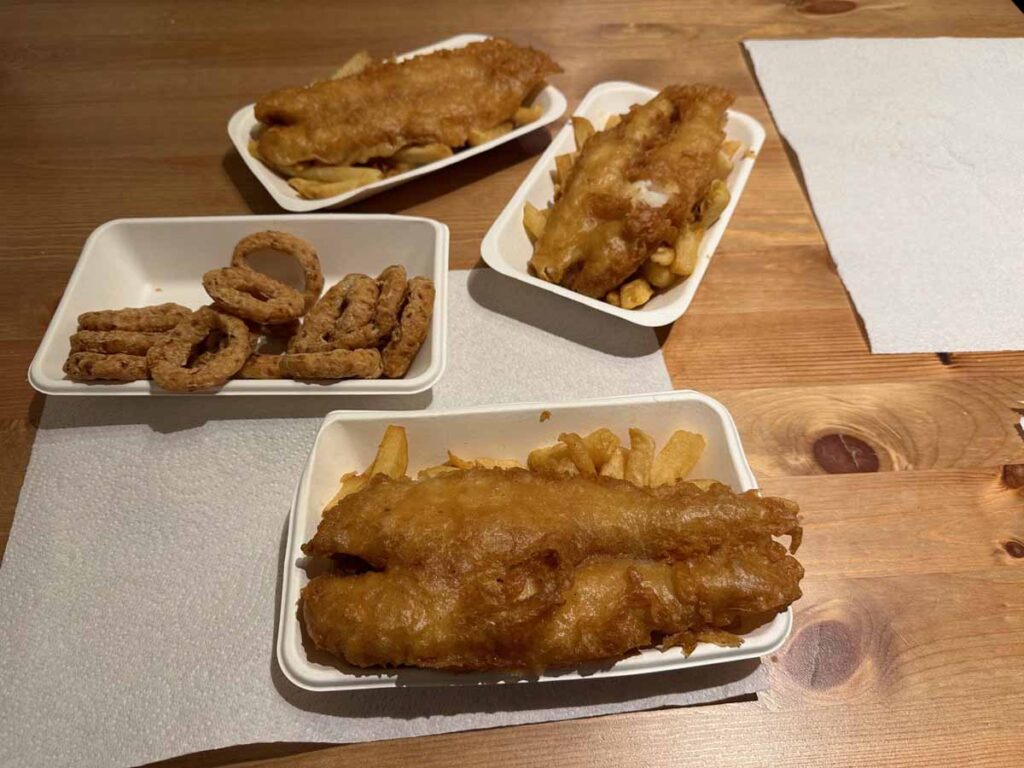
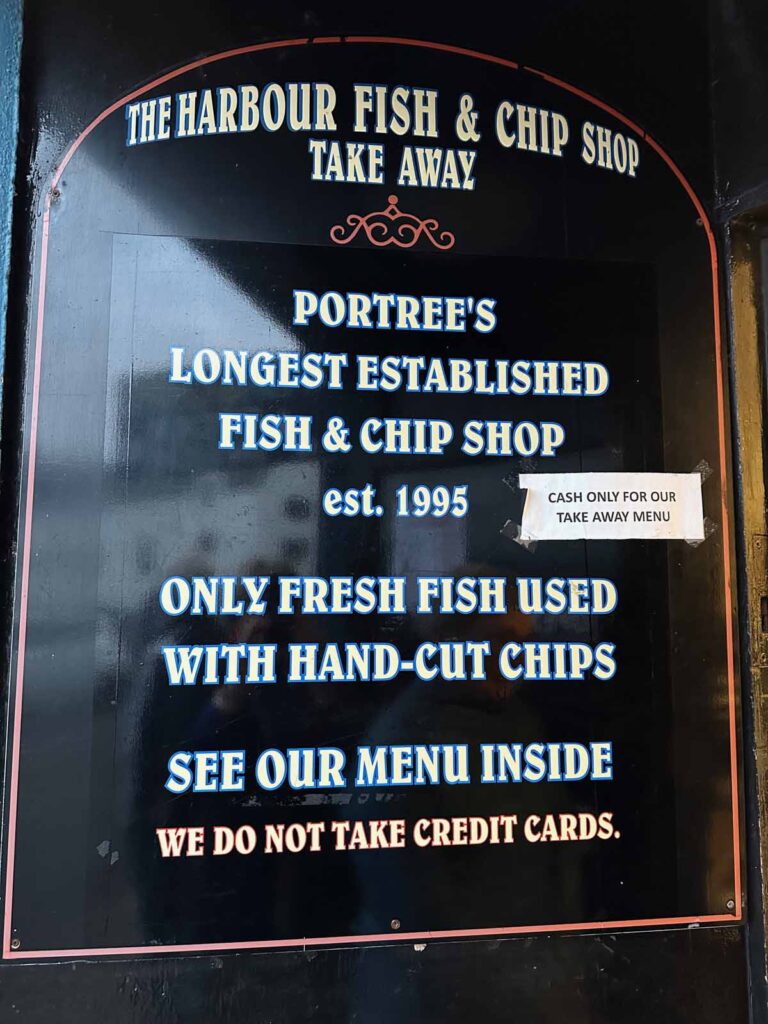

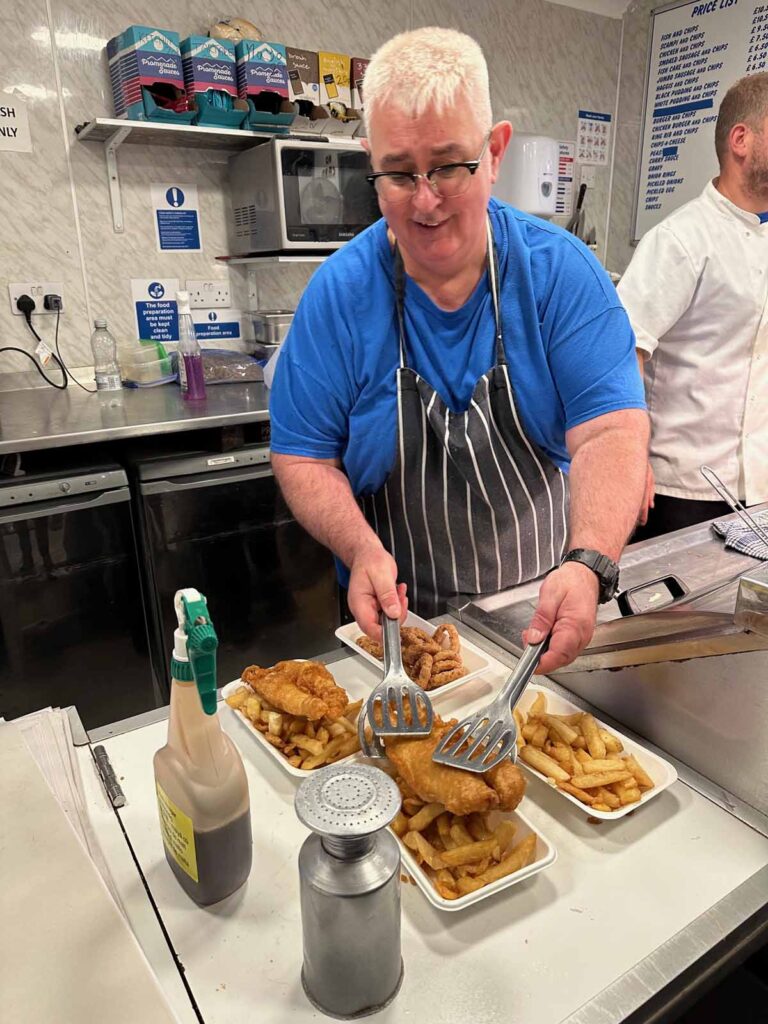
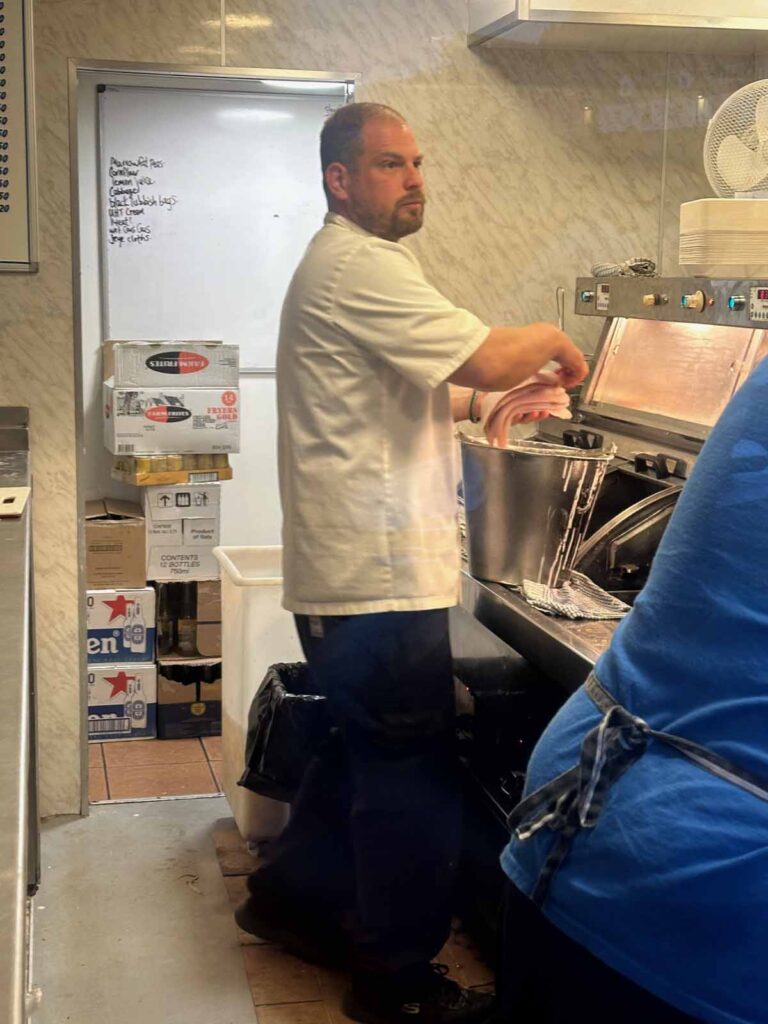






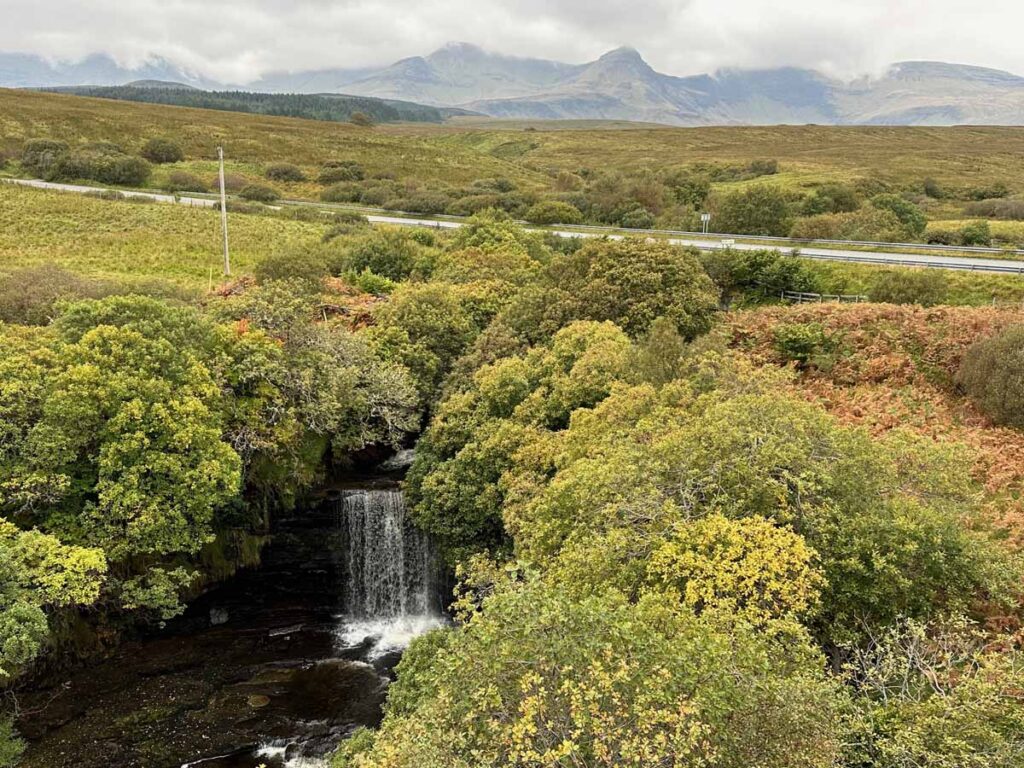


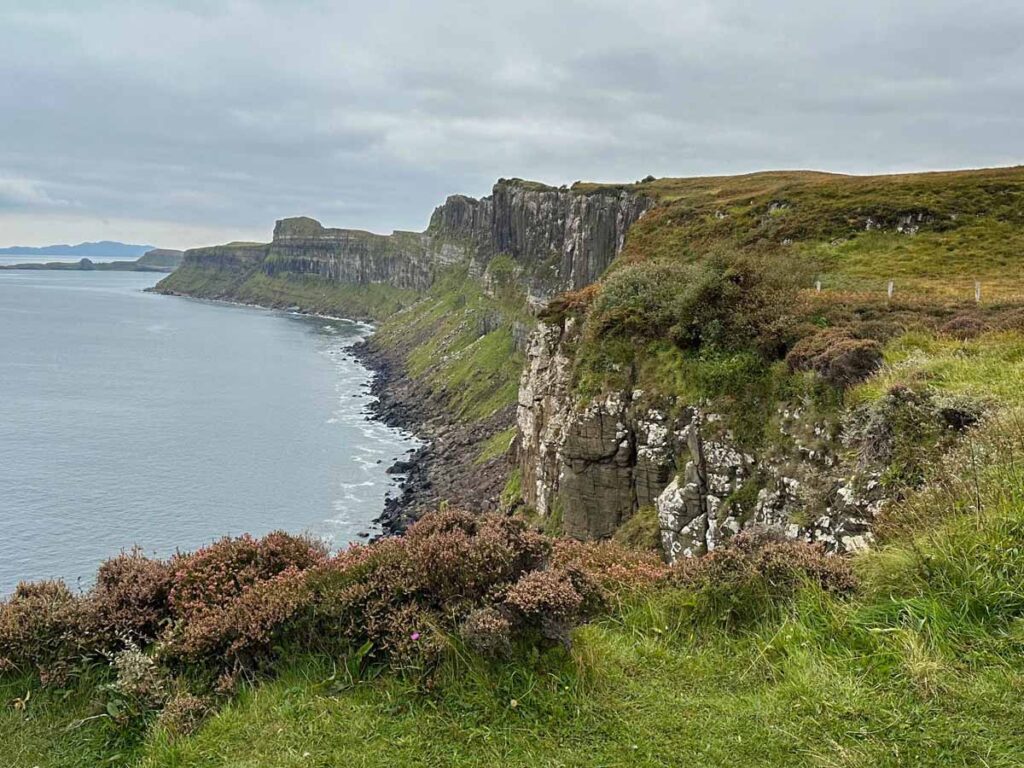

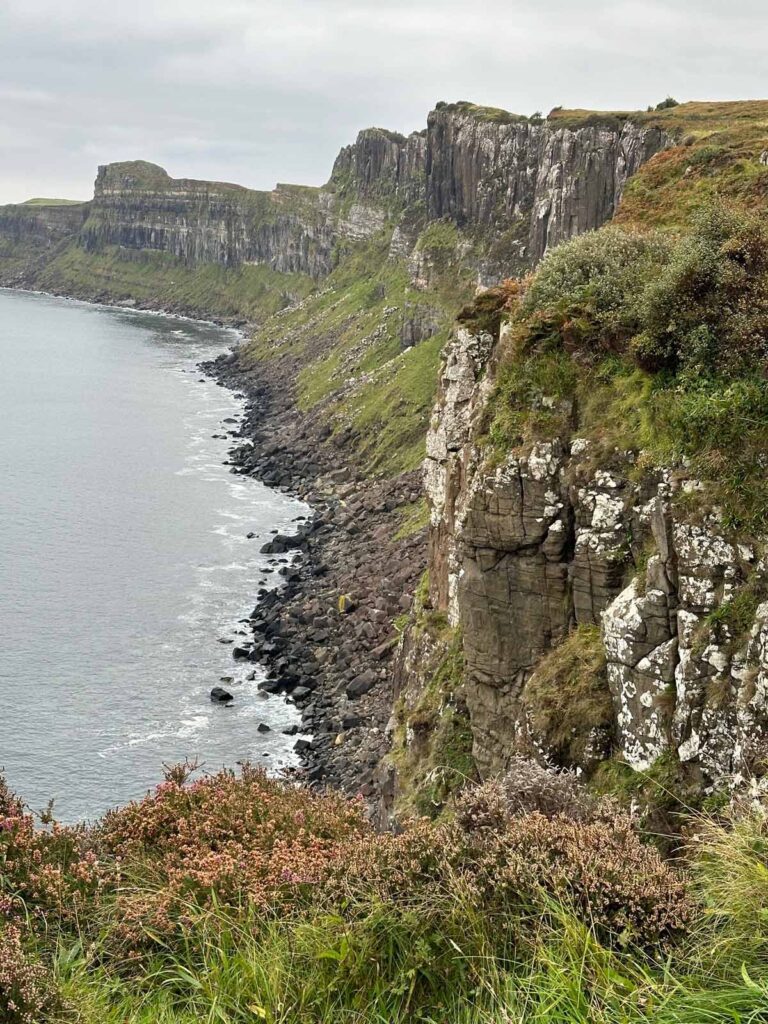

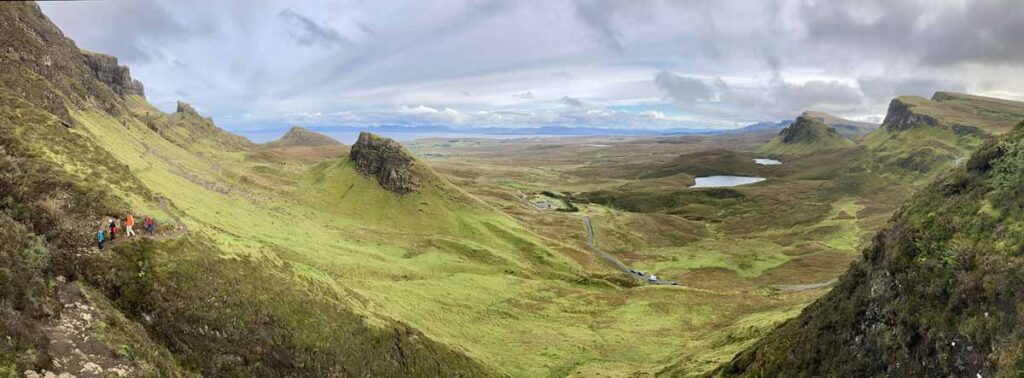
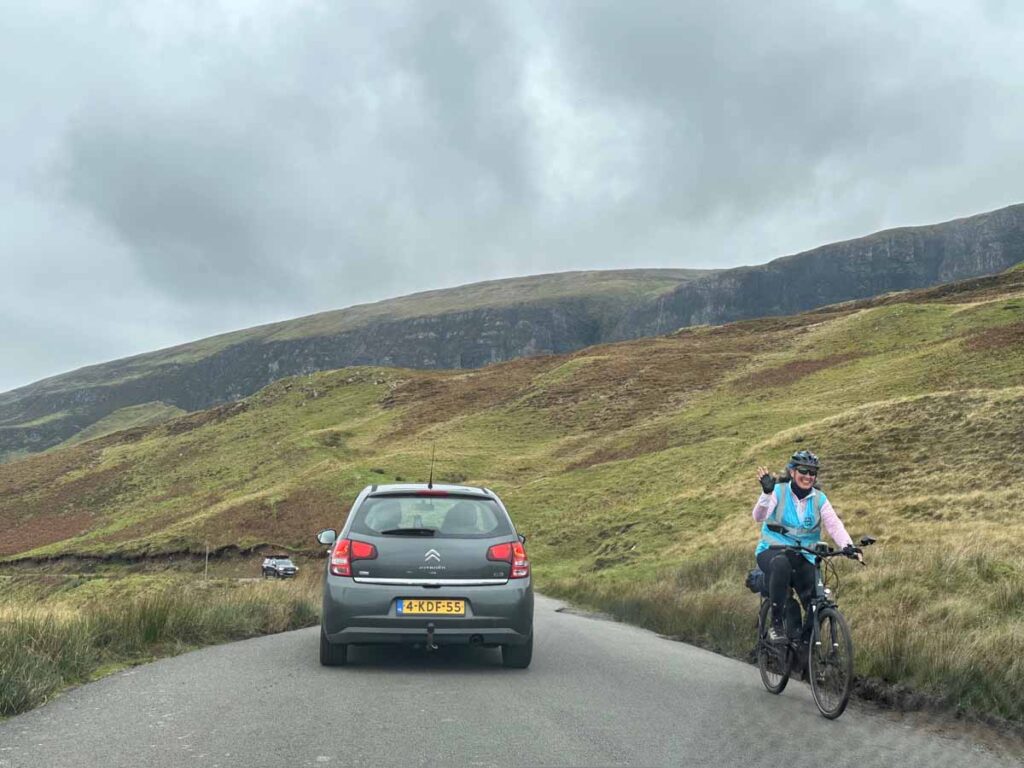

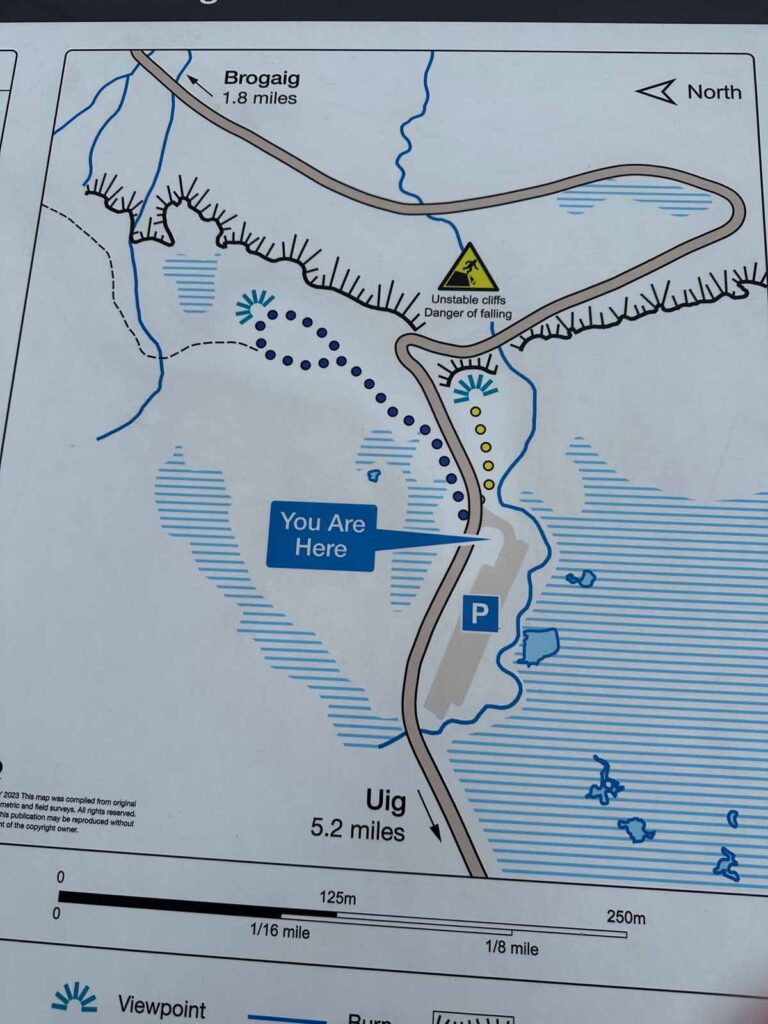



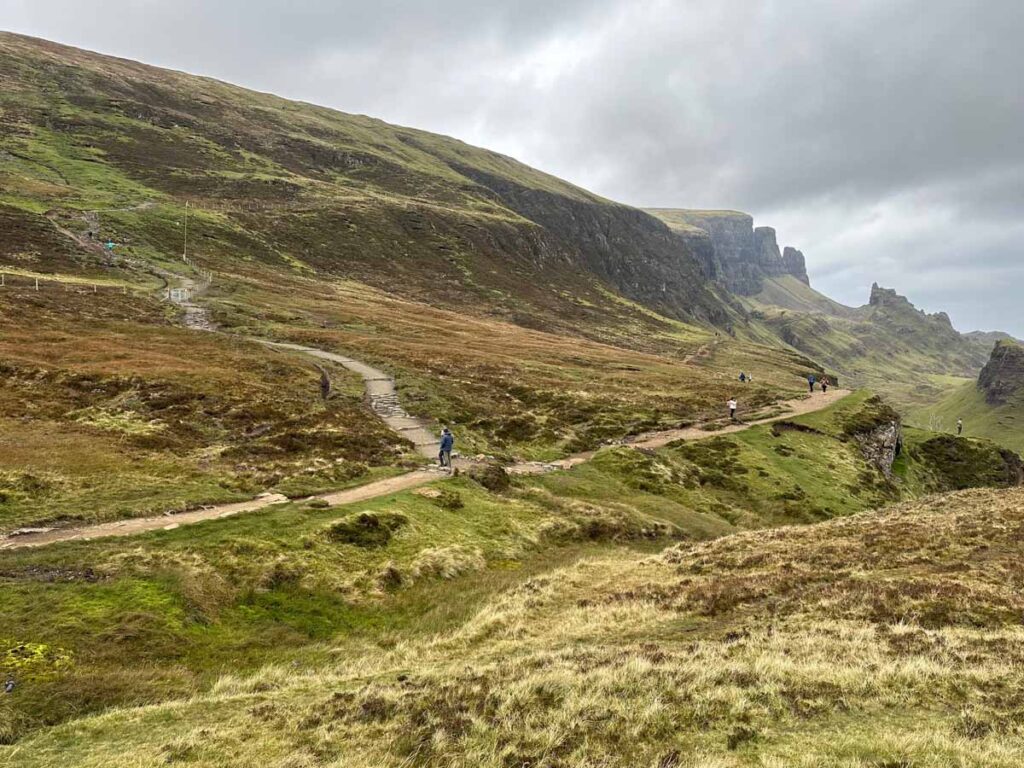


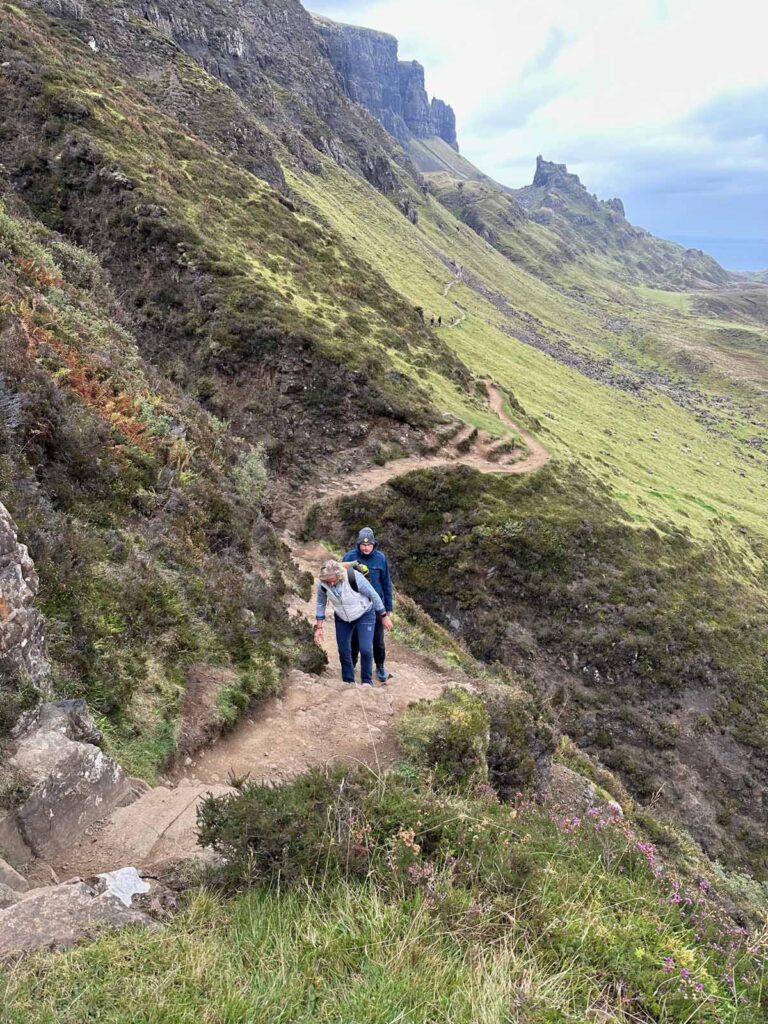
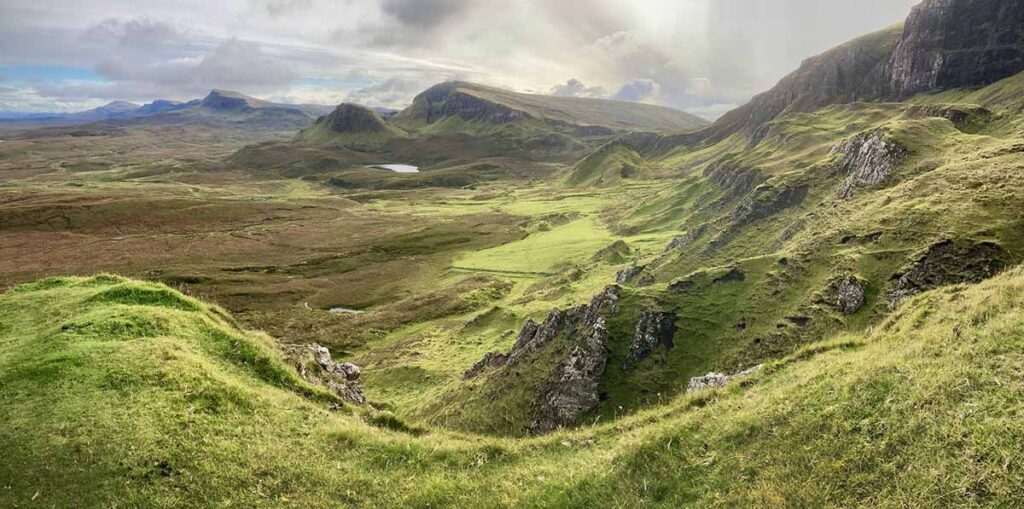

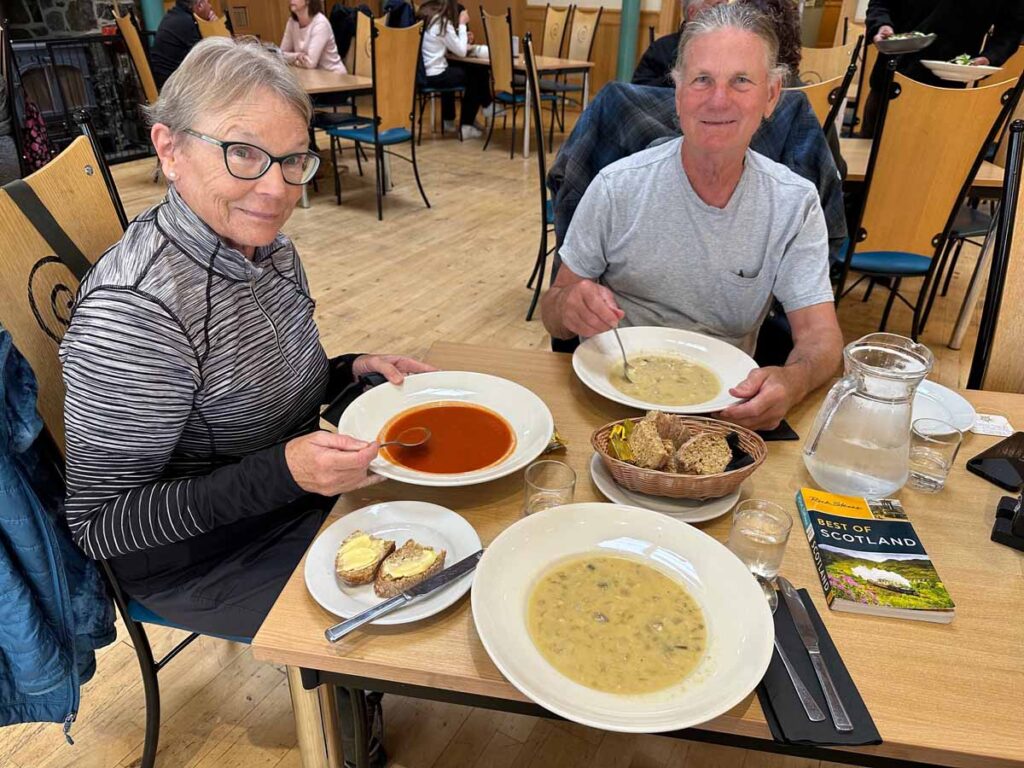



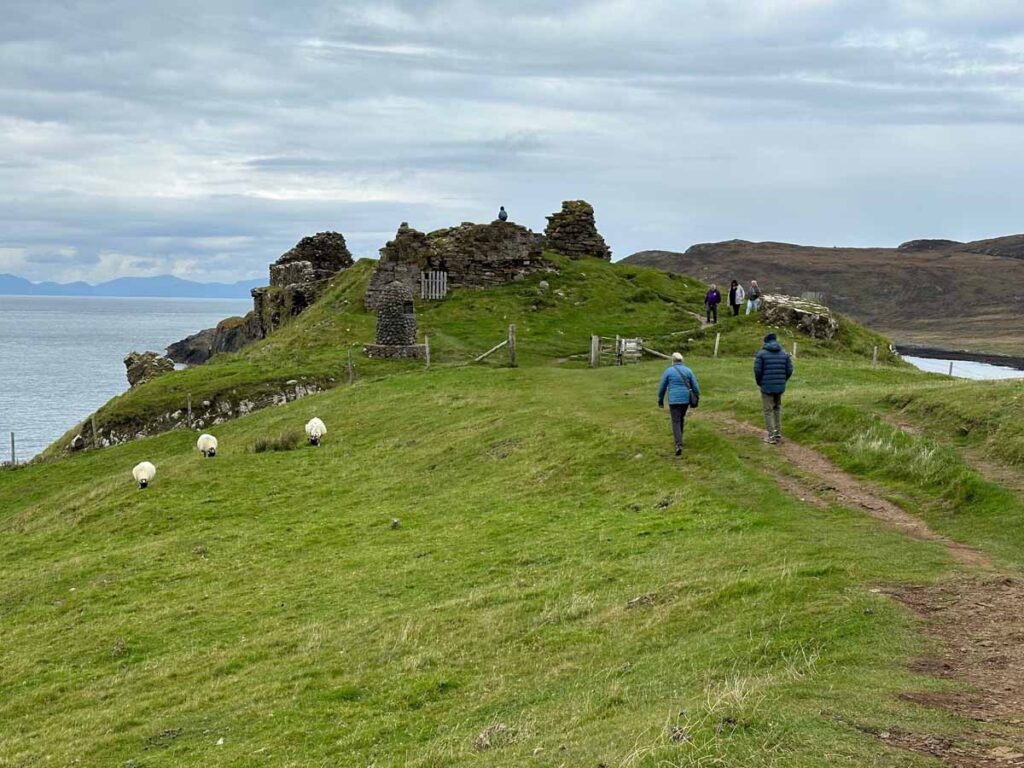

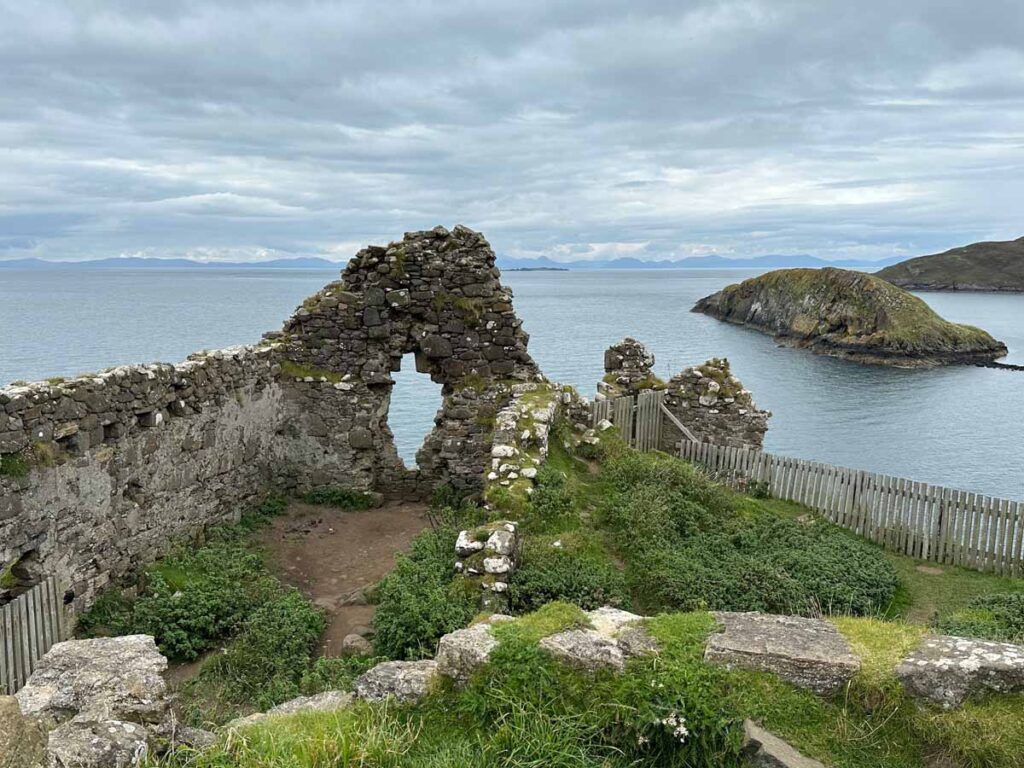



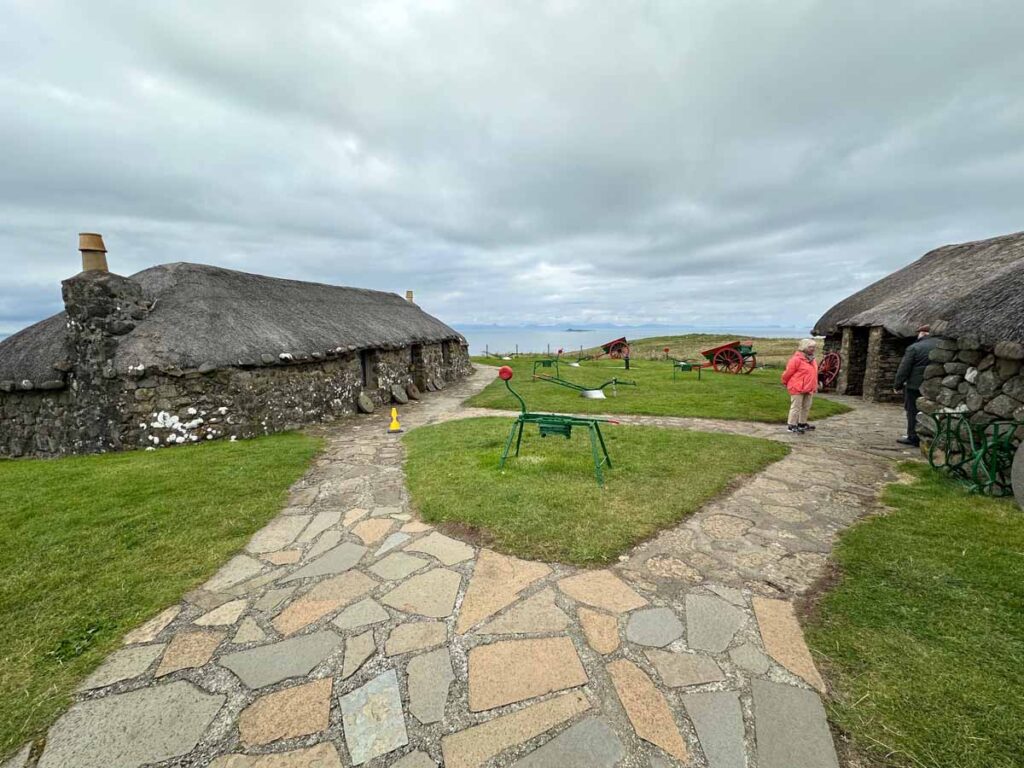



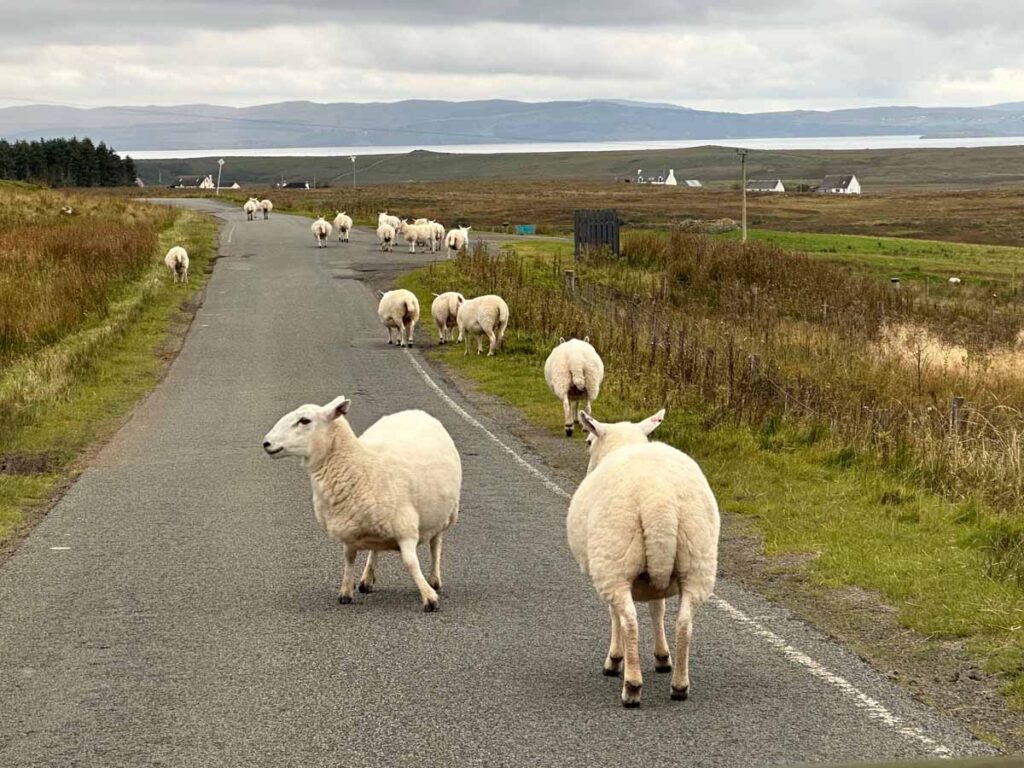
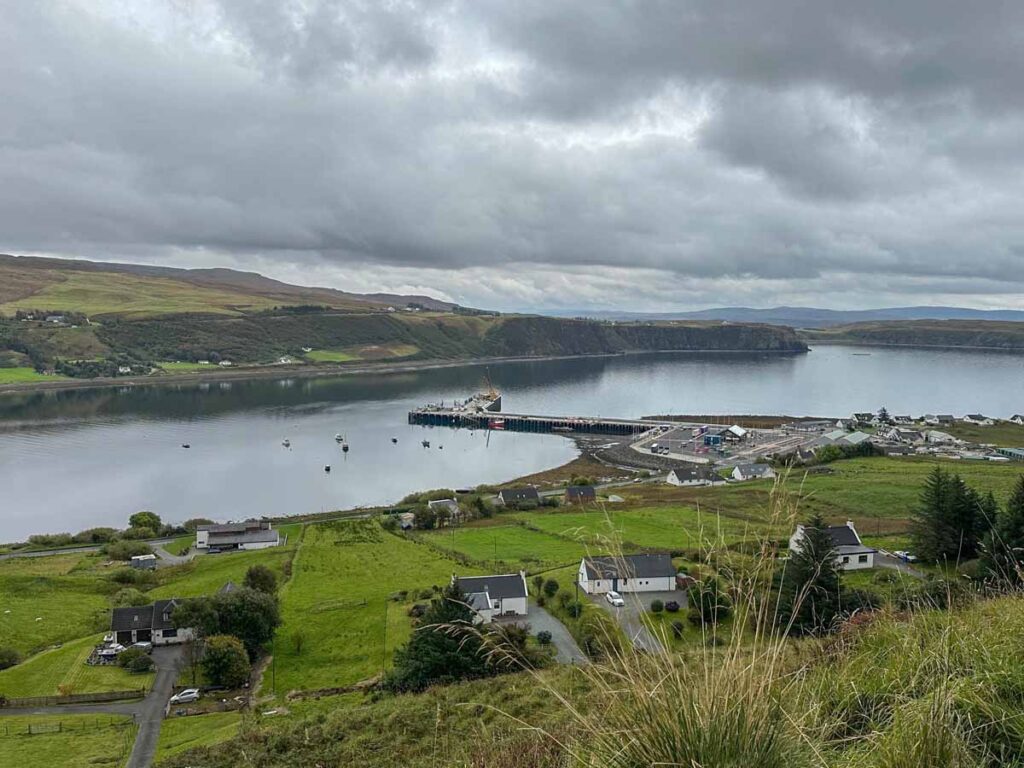

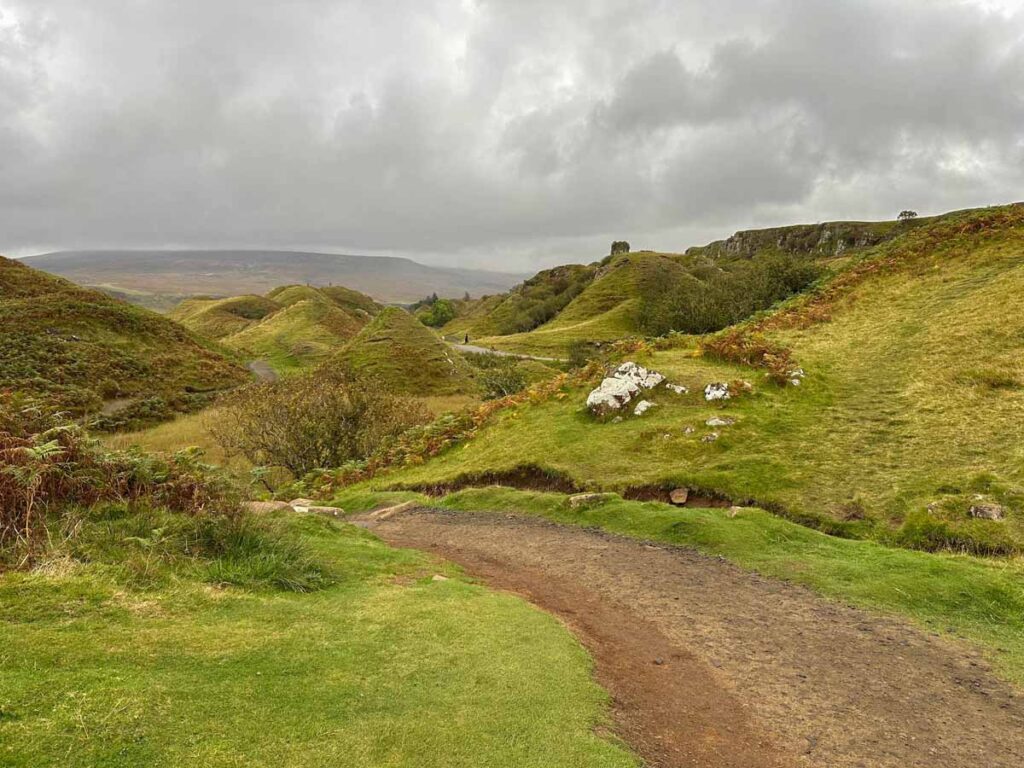



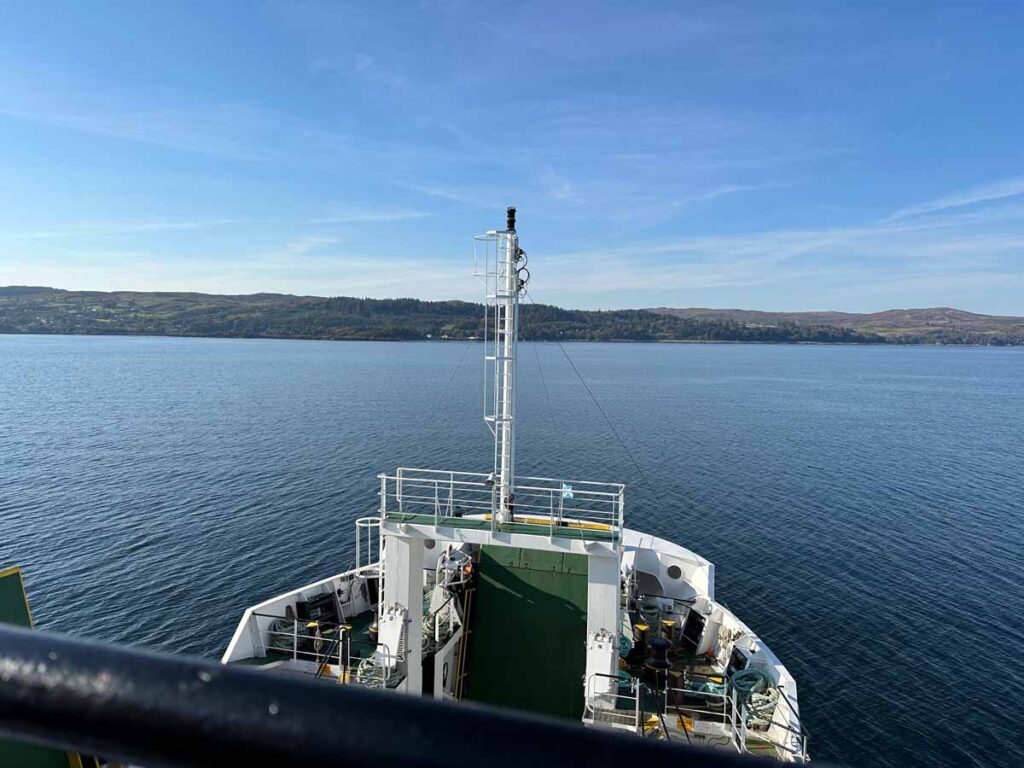

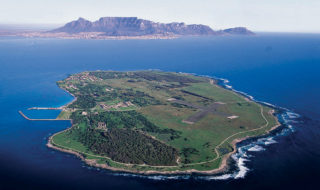
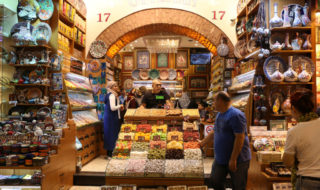
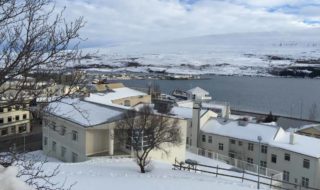
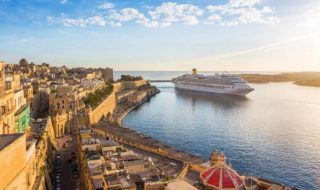
great post, Scotland is so beautiful and has so much to see and do. thank you
You’re welcome. Yes, Scotland is a wonderful destination filled with great beauty!